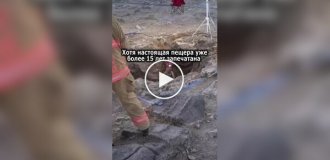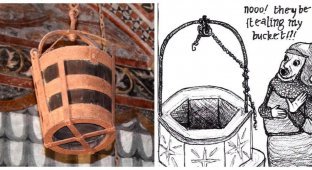Alone Some died over a bucket, others killed over shit: 10 wars that started for ridiculous reasons (12 photos)
History knows many wars for land, power, and wealth. But there were also others – where people died over a stolen bucket, postage stamps, or a lost football match. 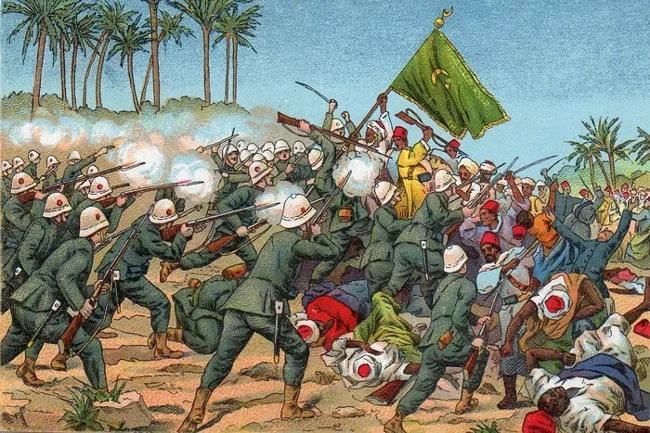
The formal (!) reasons for these conflicts seem absurd, but behind almost every one of them are real battles, thousands of victims, and an uncomfortable question: how did humanity allow such madness to occur?
1. War over a Bucket (1325–1337). Bologna vs. Modena
The war began on November 15, 1325, with the major Battle of Zappolino – one of the largest battles in medieval Italy, involving approximately 35,000 infantry and 4,000 knights. 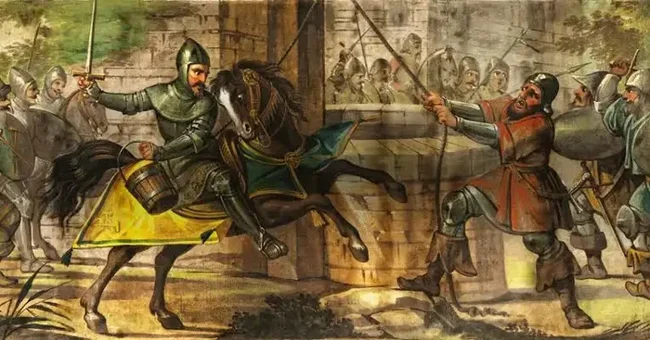
In 1325, a group of Modena soldiers infiltrated Bologna and stole an oak bucket from the city's well.
The conflict was sparked by the theft of a wooden oak bucket used in Bologna to draw water from a well, which the Modena soldiers took as an insult. The bucket itself was of little value, but it symbolized disdain and defiance.
Bologna mobilized up to 30,000 infantry and 2,000 cavalry, but lost the battle to the tactically superior Modenese army. Over 2,000 men died in that battle, despite the Modenese's smaller numbers.
The war lasted about 12 years, and although the true causes of the conflict (the struggle for influence and territory) were eventually forgotten, the war continued, fueled by the enmity and intransigence of the cities.
The bucket was never returned – it is now kept as a trophy in one of Modena's towers (the bell tower of the cathedral) and is considered a symbol of victory and the futility of the war. Modern students from Modena and Bologna annually stage mock "bucket fights" to commemorate this event.
2. The War of Jenkins' Ear (1739–1748). Britain vs. Spain
This war took its name from an incident in 1731 when a Spanish officer cut off Captain Robert Jenkins' ear while inspecting the English merchant ship Rebecca. Jenkins kept the ear and displayed it in the British Parliament in 1738, sparking a public outcry and becoming the formal pretext for the war.
"Jenkins' ear struck the public imagination and became the symbol of universal excitement. Whether it was really his own ear, and whether he had actually lost it in a port skirmish, remained unclear, but the influence of this shriveled object was enormous." - Winston Churchill, History of the English-Speaking Peoples Vol. 3. - Moscow, 1963
In reality, the root of the conflict lay in the trade rivalry between Spain and Britain for control of the West Indies and sea routes, as well as the struggle for the right to transport slaves (the "asiento" treaty), who were a key element of the economies of both empires. 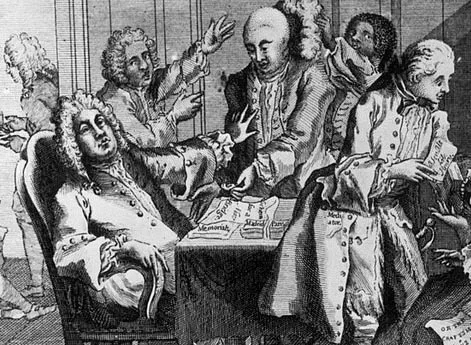
Captain Jenkins presents his severed ear to Prime Minister Robert Walpole. Source: wikipedia.org
The war was fought primarily in the Caribbean, with battles taking place off the coast of the Caribbean and in Georgia (a North American colony). One of the famous commanders on the British side was Edward Vernon, famous for his attack on Spanish forts in the Caribbean.
The war resulted in the Second Peace of Aachen in 1748 – the status quo was maintained, and the influence of the parties remained virtually unchanged.
Losses were significant – approximately 20,000 people were killed or died of disease, and many ships were damaged or lost, clearly demonstrating that, although the pretext was idiosyncratic, the war was serious.
3. The Pig War (1859). USA vs. Britain (San Juan Island)
In 1859, a conflict erupted when a San Juan Island settler shot and killed a pig belonging to a British colonist after it had been found rummaging in his garden. This sparked tensions over the disputed San Juan Islands in the Pacific Ocean. 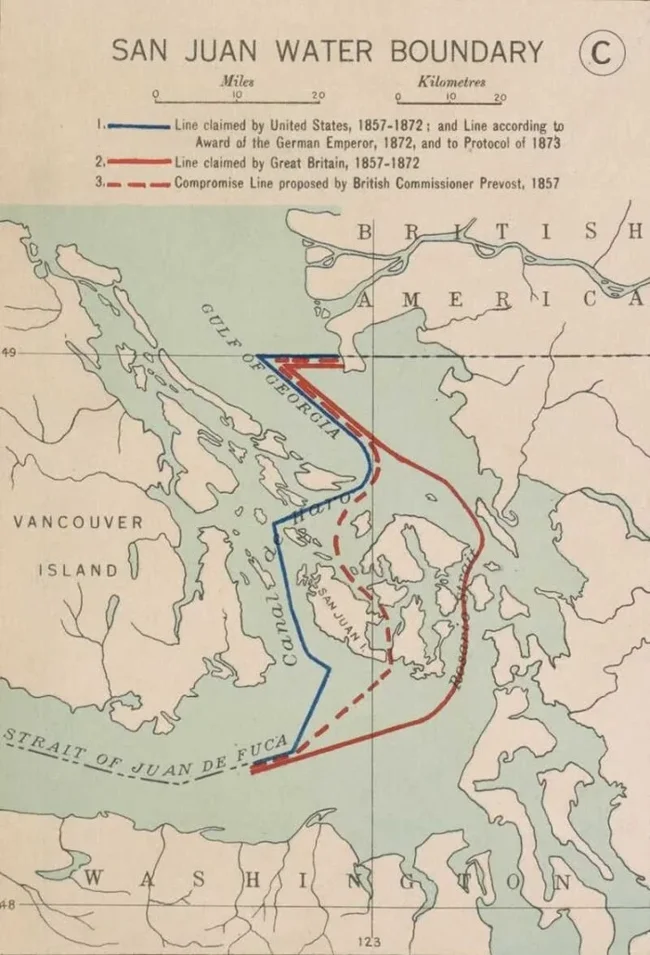
"San Juan Dispute," 1859
The conflict, known as the Pig War, lasted for about 12 years, but not a single shot was fired during the entire period, except for the unfortunate shot at the pig.
The conflict was settled by arbitration in 1872, and the island was ceded to the United States.
4. The Candy Store War (1838–1839). France vs. Mexico
The first French intervention in Mexico is often called the "Cake War." In 1838, the French invaded Mexico, allegedly to collect overdue debts. However, the conflict began ten years earlier, in 1828, when Mexican troops allegedly destroyed and looted the French pastry shop of Remontel on the outskirts of Mexico City. 
"Storming the House of General Santa Anna," 1838. Source: wikipedia.org
The owner of the ransacked pastry shop demanded 60,000 pesos in compensation from the Mexicans (several times higher than the shop's actual value). The Mexicans refused to pay. The pastry chef then complained to the French monarch, Louis-Philippe, asking him to demand reparations from the Mexican government. The king initially ignored the request, but 10 years later, the French decided to use the old conflict as a pretext for an invasion and repayment of the "debt," which they had already estimated at 600,000 pesos.
Hoisting off the coast of Mexico began on November 27, 1838, with an artillery bombardment of the fortress of Veracruz, during which more than 220 Mexicans were killed. The conflict, which flared up, continued until March 1839, until Mexican President Anastasio Bustamante agreed to pay the French all outstanding debts. Peace was concluded, and on March 9, 1839,...
5. The Great Guano War (1879-1883). Chile vs. Peru and Bolivia
This war over bird droppings had a very official name – the Second War of the Pacific – and was waged by Chile, with British support, against Peru and Bolivia with the goal of capturing the rich guano (bird droppings) deposits in the Atacama Desert.
In the mid-19th century, guano was not only a valuable fertilizer but also an even more valuable raw material for gunpowder production. Guano was even called "white gold" at the time. Countries that controlled its deposits reaped enormous profits. 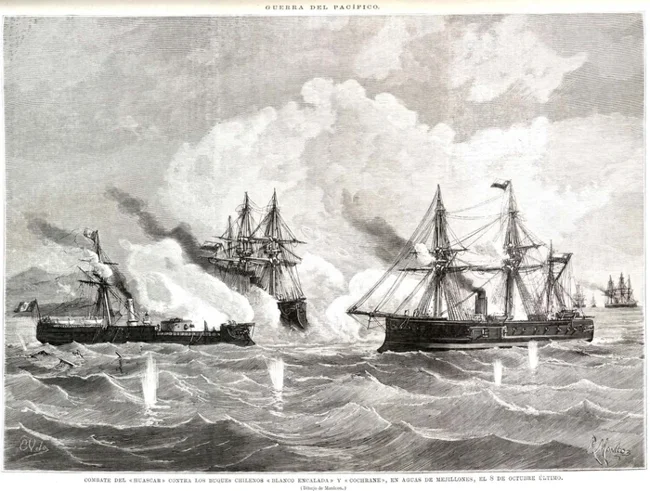
Battle of Cape Angamos Photo: wikipedia.org
In 1879, Chilean troops occupied a port in the Bolivian province of Antofagasta, whose coastline was rich in bird deposits. During the fighting, which lasted from February 14, 1879, to October 20, 1883, the Chileans captured territories rich in deposits: the provinces of Antofagasta passed from Bolivia to Chile, and Tarapaca and Arica y Parinacota passed from Peru to Chile.
"This is England's war with Peru, waged by the Chilean army... Chile would never have advanced an inch without the support of English capital, and no political combination in history has been so skillfully played out as this war, all the booty and spoils of which went to the British," former US Secretary of State George Blaine remarked during Senate hearings on the War of the Pacific.
Casualties: In some battles, such as at Tarapaca, the Chileans suffered around 576 casualties, while the Peruvians and allies also suffered significant losses, including over 1,000 killed during the assault on Arica.
6. The War of the Chair (1900). British Empire vs. Ashanti People (modern-day Ghana)
The conflict was part of a series of Anglo-Ashanti Wars and was the last major Ashanti rebellion against British colonial rule. 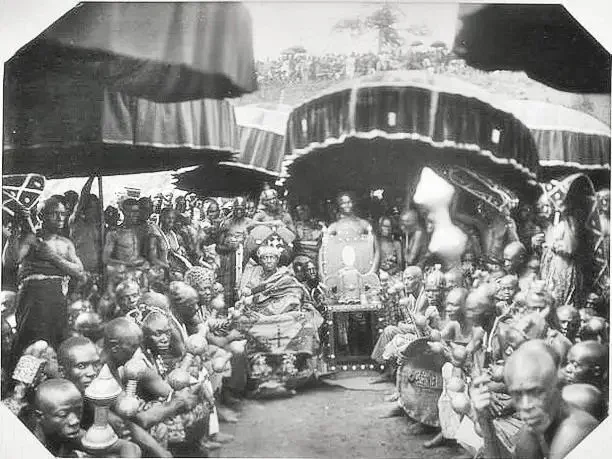
The Golden Throne of Ashanti. Source: wikipedia.org
The catalyst for the uprising was an attempt by British Governor Frederick Hodgson to seize the Golden Stool (Si ka Dwa) – a sacred symbol of the power and independence of the Ashanti people, who believed that the Golden Stool contained the soul of the people and united generations of the dead and the living. Even their leader was not allowed to sit on this throne.
In March 1900, the governor was outraged by the absence of the throne and demanded that it be produced for shipment to Britain. During their attempt to locate and confiscate the Golden Stool, British forces encountered fierce resistance – local residents carefully concealed the relic and staged an armed uprising that lasted from March to September 1900.
The uprising was eventually suppressed. The search for the Golden Stool continued until 1921. The British and their allies lost approximately 1,000 men in this war. Ashanti losses were several times greater.
7. War over the Dog (1925). Greece vs. Bulgaria
The Petrichi Incident between Greece and Bulgaria, known as the "War over the Dog," was a small but tense border dispute. As usual, the conflicting sides have differing accounts. One version claims that a Greek soldier was killed by Bulgarians when he accidentally crossed the border while chasing his escaped dog. A Greek officer was also killed in the ensuing firefight. 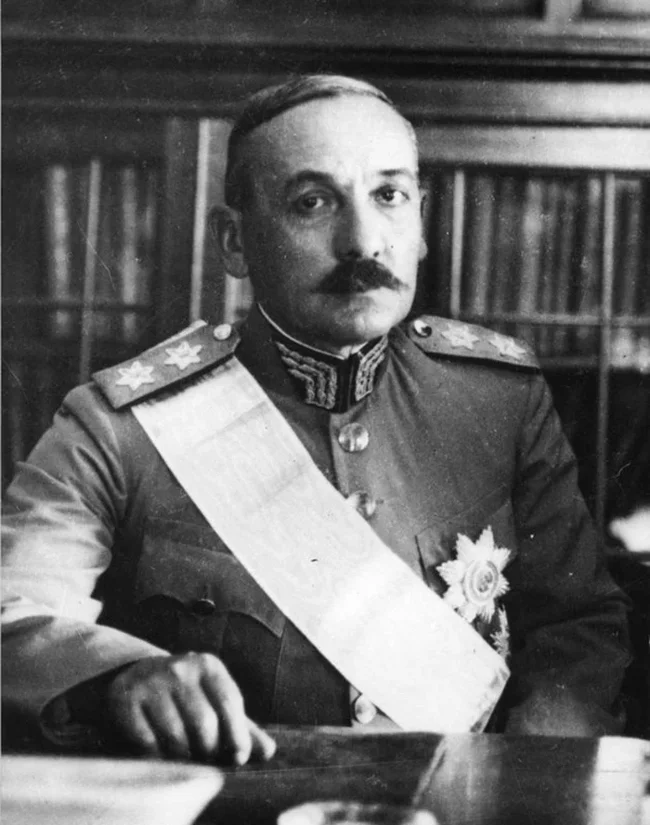
Theodore Pangalos. Source wikipedia.org
The Bulgarian government apologized for the mistake and tried to hush up the matter, even offering a joint investigation into the incident. But Greece, under the leadership of dictator Theodoros Pangalos, decided to take revenge and responded with a full-scale invasion of Bulgarian territory.
After the League of Nations intervened, the conflict was quickly resolved, and Greece was forced to withdraw its troops. This time, a serious conflict was averted.
This incident was one of the rare examples where diplomacy and international organizations were able to avoid escalation.
8. "War of the Stamps" (1932-1935). Bolivia vs. Paraguay
These countries had long had a territorial dispute over the Gran Chaco region. Each considered this territory their own.
In 1927, Paraguay issued a stamp with a map showing the disputed territory as Paraguayan. Bolivia couldn't tolerate such impudence and responded in kind, issuing a stamp showing the disputed land as Bolivian. This "postage stamp" dispute continued for several years, considerably electrifying public opinion in both countries. 
Paraguayan and Bolivian postage stamps with maps from the Gran Chaco War.
Finally, in 1932, just before the outbreak of hostilities, Paraguay issued another series of stamps, on which the disputed territory was designated as "Paraguay's Northern Chaco" with the inscription "Was, is, and will be!" Moreover, on the new stamps, the territory claimed by Paraguay was even larger than in 1927. This was too much!
Military action began with the transfer of Bolivian troops to the Gran Chaco region. 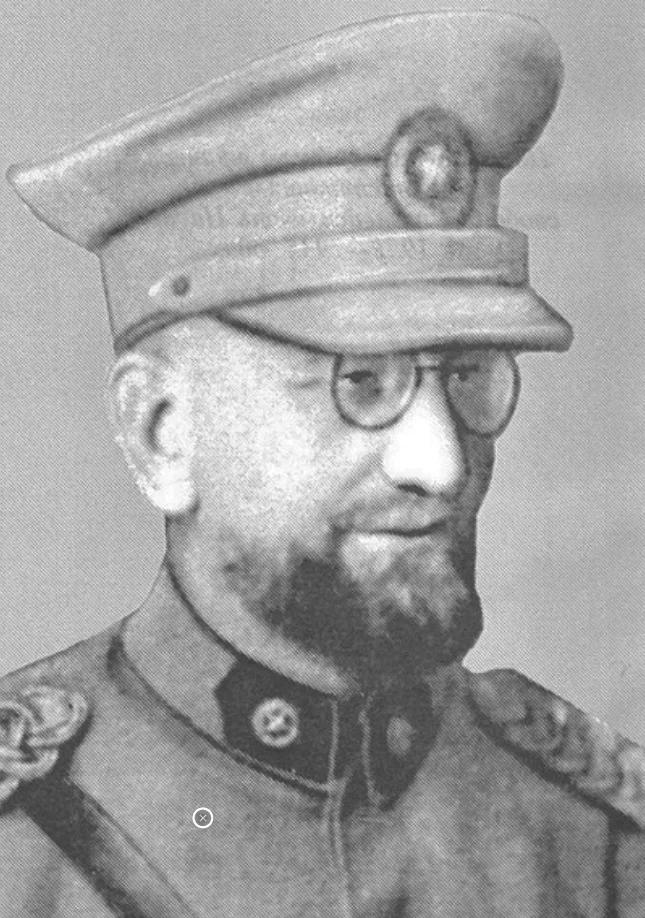
General Ivan Timofeevich Belyaev - Inspector General of the Paraguayan Artillery, Chief of the General Staff of the Paraguayan Army from 1933, and head of the defense of the Chaco region.
However, even here, the stamps were merely a formal pretext. The true reasons for the war were far more prosaic – economic interests. At the time, there were suspicions of oil reserves in the disputed territories. Consequently, no one wanted to voluntarily give up the opportunity to profit.
True, no oil was ever found there, but it was too late. In the conflict, both sides lost a combined total of over 90,000 people killed. The Chaco War of 1932–1935 resulted in victory for Paraguay, which gained 72% of the disputed lands.
This war became one of the bloodiest armed conflicts in Latin America in the 20th century.
9. The Football War (1969). El Salvador vs. Honduras
The conflict erupted against the backdrop of long-standing and intense socioeconomic disputes and migration issues between the two countries. The spark that ignited the war was a series of football matches in the 1970 World Cup qualifying round. 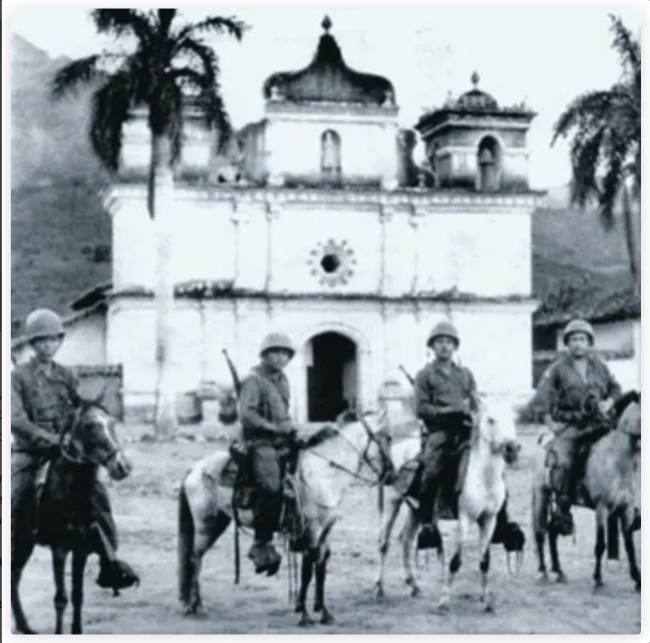
Salvadoran soldiers on the border with Honduras during the 100-Hour War.
Active hostilities lasted four days (leading to the war's informal nickname, the "100-Hour War"). Between 3,000 and 6,000 people died in the conflict. Another 50,000 people in border areas were left homeless.
Despite the short duration of the fighting, the conflict's consequences were felt for quite some time. A final peace agreement was not signed until 10 years later.
10. "The Google Maps War" (2010) – Costa Rica vs. Nicaragua
For over 100 years, Costa Rica and Nicaragua have disputed the border along the San Juan River, a narrow strip of land and water separating the two countries. The dispute simmered until a curious but dangerous incident occurred in 2010.
In November 2010, Costa Rican authorities discovered that Nicaraguan troops had landed on the disputed island of Calero. Google Maps had accidentally labeled the area as part of Nicaragua, prompting the Nicaraguan military to immediately deploy troops there, arguing that "digital maps confirmed their rights." 
Nicaraguan President Daniel Ortega displays a map of the disputed territories during a televised address about the border dispute with Costa Rica.
A 50-person Nicaraguan contingent has set up a temporary camp on the island and begun clearing trees.
Costa Rica accused Nicaragua of environmental suffocation (due to deforestation and river diversion), filed a complaint with the International Court of Justice in The Hague... and deployed police to the border. Why police? Simply because there was no one else to send. Costa Rica has no army, having abolished it in 1949.
Google quickly corrected the error and apologized, but this had no effect on Nicaragua's position. It was only in 2015 that the International Court of Justice recognized Costa Rica's rights to Caliero Island and adjacent lands and ruled that Nicaragua must pay compensation for environmental damage. However, Nicaraguan troops finally withdrew from the captured territories only in 2018.
PS
As you can see, although all these wars formally began over absurd or ridiculous pretexts, they were all essentially in a "waiting" mode for a long time, when only a small spark was needed for a major conflagration. If war has been in the air for a long time, the only question is when that spark will occur. And what exactly that spark will be—a bucket or guano—isn't so important.
Disclaimer: Some events described in this post, as well as their wording, lack unambiguous documentary evidence, or have alternative interpretations and versions. Therefore, don't evaluate the facts of this post for 100% historical accuracy. Consider the post more as a collection of historical anecdotes. But remember, there's more than a grain of truth in every joke!






